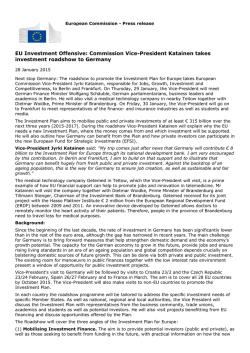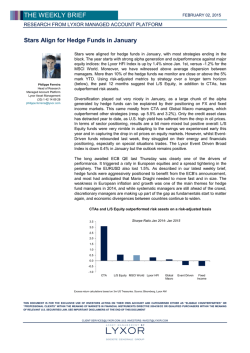
What Have You Learned in the Past 2 Seconds?
Equity Research— Americas Industry: Foods March 12, 1997 Michael Mauboussin 212/325-3108 [email protected] What Have You Learned in the Past 2 Seconds? Frontiers of Finance Introduction “Is it not reasonable to anticipate that our understanding of the human mind would be aided greatly by knowing the purpose for which it was designed?” George C. Williams Have you ever had a bad day at work? The stocks you like are all down; you feel as though it is nearly impossible to beat the market; and you are frustrated by the stock market’s inability to grasp the key insights you see so easily. In short, you feel as though you were not cut out to understand the investment business. Well, here is some good news and some bad news. The bad news is that you are not, in most probability, well designed to be a successful investor. The good news is that you share this lot with most every one else. The reason is simple: the mind is better suited for “hunting and gathering” than it is for understanding Bayesian analysis. Darwin and Alphas Charles Darwin formalized a theory that would change the way scientists understand the world. The underlying premise upon which Darwin’s theory builds is that there is a constant struggle among organisms to survive.1 Darwin documented two critical points. First, given competition, any advantages enjoyed by an individual would bias the pool of offspring (“survival of the fittest”). These characteristics are not a question of “better” or “worse” but “more suitable” versus “less suitable.” Second, biases created by small advantages would become amplified over long periods of time.2 The hard-to-appreciate point is that evolution is an excruciatingly slow process— measured in tens or hundreds of thousands of years, not in decades. Most people feel comfortable with the notion that human motor skills— basic dexterity— are not very different from what they were 10,000 years ago. However, many people have a harder time accepting that our cognitive makeup— including our emotions, rationality, and decision making skills— has also remained basically unchanged over the centuries. As Daniel Goleman wrote in his best-selling book, Emotional Intelligence: “In terms of the biological design for the basic neural circuitry of emotion, what we are born with is what worked best for the last 50,000 human generations, not the last 500 generations...The slow, deliberate forces of evolution that have shaped our emotions have done their work over the course of a million years; the last 10,000 years...have left little imprint on our templates for emotional life.”3 The rapid rate of change in human society over the past 200-300 years— including the introduction of organized capital markets— has been unprecedented. If it takes tens of thousands of years, from an evolutionary standpoint, for us to “catch up” with our environment, it is fair to say that humans have no mental basis, or context, to understand how to invest in capital markets “rationally.” Table 1 underscores this point. The table represents a time line, with the identification of the first Homo sapiens as a starting point, chronicling the approximate time when various events occurred. Further, the time line was scaled to equal one day, to provide perspective. Homo sapiens came into existence (roughly) 2 million years ago, which is noted as the stroke of midnight. Mitochondrial Eve— the common female ancestor among all living humans (apologies to any creationists)— lived about 180,000 years ago, or at about 9:50 PM. Modern finance theory, the –2– Frontiers of Finance framework to which investors are supposed to adhere, was formalized about 40 years ago, at 11:59:58 PM. It is now midnight. What have you learned in the past 2 seconds? Table 1 Time Line of Homo sapiens Event Homo sapiens appear Mitochondrial Eve (“mother of all humans”) Domesticated Homo sapiens Hindu/Arabic numbering system introduced in the West Modern Finance Theory When (years ago) Time of Day 2,000,000 180,000 20,000 800 40 12:00 AM 9:50 PM 11:46 PM 11:59:25 PM 11:59:58 PM The point is clear: humans are not hard wired to rationally weigh risk and reward. We are still better suited to run like hell when we see a saber-toothed tiger than to consider potential returns of intangible assets. The simple awareness of this cognitive mismatch can help investors avoid some decision-making errors. In fact, many successful portfolio managers— those who deliver positive alphas— are often more noteworthy for what they don’t do than what they do.4 Emotional Baggage We owe much to our ancestors; the fact that they successfully propagated is why we exist. But they have also handed down a lot of cognitive baggage, which we have to carry around. Importantly, these hard-wired, mental shortcomings are precisely what make successful investing such a challenge. Major cerebral foibles include the following: • Desire to be part of the crowd. Humans have a strong desire to be part of a group: the group offers safety, confirmation and simplifies decision-making. Further, if something should go wrong, it is more comforting to be with others than to be alone— the old saying “misery loves company” rings true. However, the successful investor must be willing to separate from the crowd— to be a contrarian— even as there is a strong emotional urge to stay with the group. John Maynard Keynes addressed the power of being part of the majority, considering selfperception as well as the perception of others, almost 50 years ago. He wrote, “Worldly wisdom teaches that it is better for reputation to fail conventionally than to succeed unconventionally.”5 • Overconfidence. Most people are overconfident in the their own judgment and competence. Once again, we thank and curse our forebears. Their hardihood in the face of danger and travails are why we are here today, but our inherited boldness drives us to make mental mistakes daily. To illustrate the point, Table 2 shows the results of a widely-used overconfidence test. Professionals are presented with 10 requests for information that they are unlikely to know (e.g., Total area in square miles of Lake Michigan), and are asked to respond to each request with both an answer and a “confidence range”— high and low boundaries within which they are, say, 90% sure the true number lies. On average, respondents pick satisfactory ranges only 40-60% of the time.6 –3– Frontiers of Finance Table 2 Overconfidence Across Industries Industry tested Security analysis Money management Advertising Data processing Petroleum Pharmaceutical Average Kind of questions in test Industry Industry Industry Industry Industry & firm Firm Percentage of Misses Ideal* 10% 10 10 10 10 10 Actual 64% 50 61 42 50 49 53% (*) = The ideal percentage of misses is 100% minus the size of the confidence interval. Source: “Managing Overconfidence”, Russo and Schoemaker, Sloan Management Review, Winter 1992. Daniel Kahneman and Amos Tversky, pioneers in the area of decision making theory, have ascribed this overconfidence to “anchoring and adjusting.” That is, most of us take our best guess (and it is a guess) and adjust our high and low range based on this unreliable starting figure. The risk of poor decisions arising from overconfidence can be mitigated through feedback (finding out how far we are off the mark on a timely basis) and accountability (using the feedback and recalibrating accordingly).7 The hazards of overconfidence are reminiscent of a story about Socrates.8 An oracle of Delphi told an Athenian that Socrates was the wisest of all mortals. When Socrates heard this proclamation, he sought to disprove it by visiting a man he thought to be wiser. The “wise” man boasted of his knowledge, without consideration of what he didn’t know. Socrates concluded that he might indeed be the wisest man, precisely because he knew what he didn’t know. The same could be said for the wise investor. • Inability to assess probabilities rationally. While Kahneman and Tversky have made significant contributions to the fields of economics and psychology, they are best known for their development of Prospect Theory.9 This model identifies behavior patterns that are inconsistent with rational decision-making.10 Again, our brains are not well adapted to weighing probabilities— our ancestors likely lived day-to-day, with a limited understanding of their environment. Prospect Theory suggests three important outcomes. First, there is a systematic pattern of how framing a situation causes decision-making to deviate from the expected-utility or expected-value model. Second, people become risk-seekers when a problem is posed with a negative perspective and risk-adverse when the same problem is outlined from a positive angle. Finally, the probability of low probability events tends to be overweighted, while the probability of high probability events tends to be underweighted.11 At least two important implications for investors arise from Prospect Theory. First, analysts should be sensitive to how information is presented to them, noting that how the data are presented could bias perceived likely outcomes. Second, probabilities should be considered as objectively as possible, recognizing that reversion to the mean is a powerful force. –4– Frontiers of Finance • We love a story, especially when it links cause to effect. Humans have told stories for centuries: it is an activity that is associated with calming and soothing. Further, one of the reasons religions emerged was in order to create “causes” for many of the observed “effects,” satiating the human desire for order. Neuro-scientists have completed tests which show that the human brain will “make-up” a cause for an observed effect, lending some insight about conscious versus unconscious activity. One such test was conducted by Gazzaniga and LeDoux.12 They studied split brain patients, with the established knowledge that one side of the brain could not “talk” to the other side of the brain. Then the scientists secretly instructed one part of the brain to produce various actions (laughing, waving), and the other part actually came up with “explanations” of the behavior (something funny was said, I know that person over there). The brain works hard to make sense of the world, and it is not beyond making things up in order to close the cause/effect loop. Investors, in turn, should be critical of explanations of cause and effect, knowing that such explanations are innately pleasing. Remarkably, no one thinks much of the fact that the Wall Street Journal diligently reports every morning on why the stock market did what it did, when in fact it is nearly impossible to isolate the cause from the effect in such a complex adaptive system. • Use of heuristics, or rules of thumb. The world is a complicated place, and is becoming increasingly more so. As a result, humans use rules of thumb— formally called heuristics— in order to guide decision-making. Heuristics provide an efficient way of dealing with complex situations. However, their use also leads to systematic biases— the value of a heuristic is context dependent— resulting in suboptimal decisions. There are three general heuristics.13 The first is the availability heuristic. People associate the frequency, probability or cause of an event by the degree to which they remember such an event. Second is the representativeness heuristic, which dictates that an individual will gauge the probability of an event’s occurrence by his/her perception of the frequency of similar events. Finally, there is anchoring and adjusting (see above). The appendix provides a more detailed summary of these heuristics along with some of their associated biases. Fitness Landscapes and Luck: Measuring Success is Hard! We would assert that capital markets— while not efficient in the strict, linear sense— are by and large well functioning.14 As has been documented, roughly 70% of all money managers fail to match the returns of popular market indices, like the S&P 500, annually.15 Further, the population of managers that do outperform tends to shift from year-to-year. The existence of successful money managers— those with solid long-term records— can generally be explained by one of the following two factors. The first is chance, which is hard to rule out in many cases. The second is the notion that some people are better hard-wired to succeed in the business than others. We borrow the term “fitness landscape”16 from biology to help explain differences among investor aptitudes. We explore these factors in turn: • Chance. Given that the distribution of money manager returns is close to normal (that is, bell shaped) and that the stock market is reasonably efficient, pure statistics dictate that some investors will perform well. The fact that few money manag- –5– Frontiers of Finance ers consistently generate risk-adjusted excess returns lends credence to the notion that much of the “success” in money management is attributable to chance. • Fitness landscapes and the role of the inductive process. We believe the idea of a fitness landscape, or “adaptive landscape” is a good way to think about success and failure in the money management business. The notion is that certain individuals within a population are endowed with a physical or mental makeup that allows them to thrive versus the rest of the population in a given context. A fitness landscape is a standard way of representing such differences. Said bluntly, some people are better suited to succeed in money management than others, based on how their brain processes information. Paul Samuelson, the famed economist, has called it the “performance quotient”: “It is not ordered in heaven, or by the second law of thermodynamics, that a small group of intelligent and informed investors cannot systematically achieve higher mean portfolio gains with lower average variabilities. People differ in their heights, pulchritude, and acidity. Why not their P.Q. or performance quotient?”17 Once again, it is good news and bad news. The good news is that some investors can systematically outperform the market. The bad news is that the skill sets of these individuals are non-transferable. Reading those Berkshire Hathaway annual reports is certainly pleasurable, but most people cannot put the ideas to work successfully. The main reason money management skill sets are nontransferable is that humans largely operate inductively, not deductively.18 While economics in general— and finance theory in particular— has been defined through deductive models (including rational agents, equilibrium, linearity), we know that humans attempt to reason based on incomplete and fragmented information. While there is only one way to be purely rational, there are infinite ways to be non-rational— and humans almost always operate in the latter space. As the differences between investors hinge on largely unconscious, innate and inductive factors, positive-alpha-generating money management skills are difficult to pinpoint and to convey. It follows that various aptitudes for investing need not be associated with formal education or intelligence quotients. Whether individuals who are predisposed to excel do find success is likely heavily influenced by personal effort and coaching. Michael Jordan, the basketball star, serves as a good example. Jordan certainly would not have been a superstar basketball player had he not been endowed with certain physical attributes. However, he is the greatest player in the world because his well-suited genotype was married to hard work and good coaching. Conclusion The process of investing money successfully in capital markets is not something that most humans are designed to do— at least yet. An evolutionary perspective shows that we are attempting to deal with a relatively new set of problems (what’s the expected return of this asset?) with an old set of tools (let’s run from danger). The best antidote to this dichotomy is to be as self-aware as possible— mindful of handed-down emotional limitations— and to stress personal strengths at the expense of personal weaknesses. –6– Frontiers of Finance Appendix Outline of Chapters 1-2: Judgment in Managerial Decision Making by Max H. Bazerman19 There are three general heuristics: 1) The Availability Heuristic. Individuals assess the frequency, probability, or likely causes of an event by the degree to which its instances or occurrences are readily available in memory. An event that evokes emotions and is vivid, easily imagined, and is specific will be more readily “available” in memory than will an event that is unemotional in nature, bland, difficult to imagine, or vague. Since instances of frequent events are generally more easily revealed in our minds, this heuristic often leads to accurate judgment. However, because the availability of information is also affected by other factors that are not related to the objective frequency of the judged event, this heuristic is fallible. 2) The Representativeness Heuristic. Individuals assess the likelihood of an event’s occurrence by the similarity of the occurrence to their stereotypes of similar occurrences. In many cases, the representativeness heuristic is a good approximation. However, it can lead to poor decisions in the case that information is insufficient and better information exists. (You can’t judge a book by its cover.) 3) Anchoring and Adjustment. Individuals make assessments by starting from an initial value and adjusting it to yield a final decision. The initial value may be suggested from historical precedent, from the way the problem is presented, or from random information. Biases Emanating from the Availability Heuristic Ease of recall Individuals judge events that are more easily recalled from memory, based on vividness or recency, to be more numerous than events of equal frequency whose instances are less easily recalled. Retrievability Individuals are biased in their assessments of the frequency of events based on how their memory structures affect the search process. Presumed associations Individuals tend to overestimate the probability of two events co-occurring based on the number of similar associations that are easily recalled, whether from experience or social experience. Biases Emanating from the Representativeness Heuristic Insensitivity to base rates Individuals tend to ignore base rates in assessing the likelihood of events when any –7– Frontiers of Finance other descriptive information is provided — even if it is irrelevant. Insensitivity to sample size Individuals frequently fail to appreciate the role of sample size in assessing the reliability of sample information. Misconceptions of chance Individuals expect that a sequence of data generated by a random process will look “random,” even if the sequence is too short for those expectations to be statistically valid. Regression to the mean Individuals tend to ignore the fact that extreme events tend to regress to the mean on subsequent trials. The conjunction fallacy Individuals falsely judge that conjunctions (two events co-occurring) are more probable than a more global set of occurrences of which the conjunction is the subset. Biases Emanating from the Anchoring and Adjustment Insufficient anchor adjustment Individuals make estimates for values based upon the initial value and typically make insufficient adjustments from this “anchor” when establishing a final value. Conjunctive and disjunctive bias Individuals exhibit a bias toward overestimating the probability of conductive events and underestimating the probability of disjunctive events. Overconfidence Individuals tend to be overconfident of the infallibility of their judgments when answering moderately to extremely difficult questions. Two More General Biases The confirmation trap Individuals tend to seek confirming information for what they think is true and neglect the search for disconfirmatory evidence. Hindsight and the curse of knowledge After finding out whether or not an event occurred, individuals tend to overestimate the degree to which they would have predicted the correct outcome. –8– 1 As Richard Dawkins says, “however many ways there may be of being alive, it is certain there are vastly more ways of being dead”. The Blind Watchmaker, (W.W.Norton & Company, New York, 1987). 2 Darwin’s Dangerous Idea, Daniel C. Dennett (Simon & Schuster, New York, 1995), p. 41. 3 Emotional Intelligence, Daniel Goleman. (Bantam Books, New York, 1995), p. 5. 4 See Barron’s, March 3, 1997. Bill Miller, one of the most successful money managers in America, paraphrases T.S. Eliot when he says “most people get into trouble from their inability to sit quietly and do nothing”. 5 The General Theory of Employment, Interest, and Money, John Maynard Keynes, (HBJ, New York, 1953). 6 Two additional points. First, we have seen similar results among MBA candidates at Columbia Business School over the years. Second, it is interesting to note that security analysts did better than average. 7 “Managing Overconfidence”, Russo and Schoemaker, Sloan Management Review, Winter 1992. 8 Sophie’s World, Jostein Gaarder (Berkley Books, New York, 1994). pp. 68-69. 9 “Prospect Theory: An Analysis of Decision Under Risk”, Daniel Kahneman and Amos Tversky, Econometrica, 1979. 10 Against the Gods: The Remarkable Story of Risk, Peter L. Bernstein (J.W. Wiley, New York, 1996), p. 271. 11 Judgment in Managerial Decision Making, Max H. Bazerman (J.W. Wiley, New York, 1994), p. 57. 12 The Emotional Brain, Joseph LeDoux (Simon & Schuster, New York, 1996), pp. 31-32. 13 Bazerman, pp. 1-47. 14 Even so-called value investors who like to assert that the market is grossly inefficient fall into a logic trap. If the market is not well functioning over time there is no basis for believing that “undervalued” securities will rise to “intrinsic value”. 15 See “The Coming Investor Revolt”, Jaclyn Fierman, Fortune, October 31, 1994. 16 Dennett, pp. 77-80. 17 Capital Ideas, Peter L. Bernstein, (Free Press, New York, 1992), p. 143. 18 Complexity, M. Mitchell Waldrop, (Simon & Schuster, New York, 1992), p. 252-255. 19 Bazerman, pp. 6-9, 45-46.
© Copyright 2025
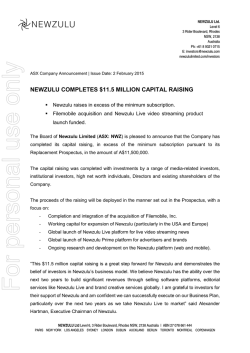
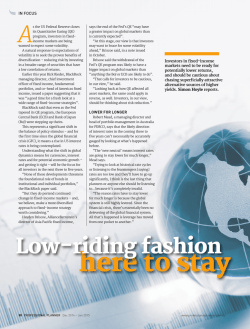
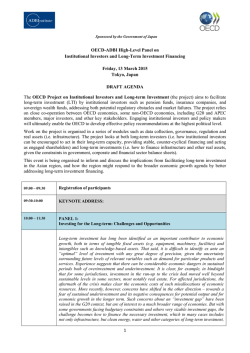


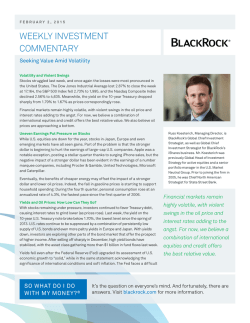
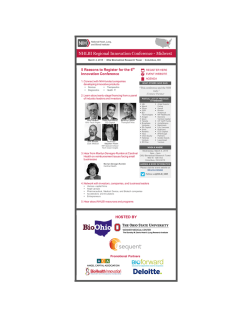
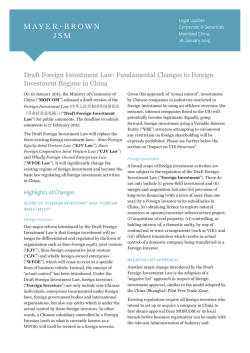
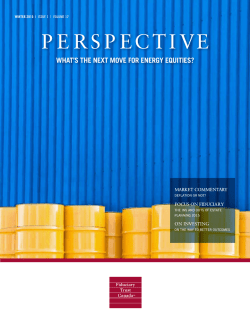
![Download Magazine [PDF] - Insurance Times and Investments](http://s2.esdocs.com/store/data/000486708_1-d66ca8d0755541eb24c6e1103676ef96-250x500.png)
